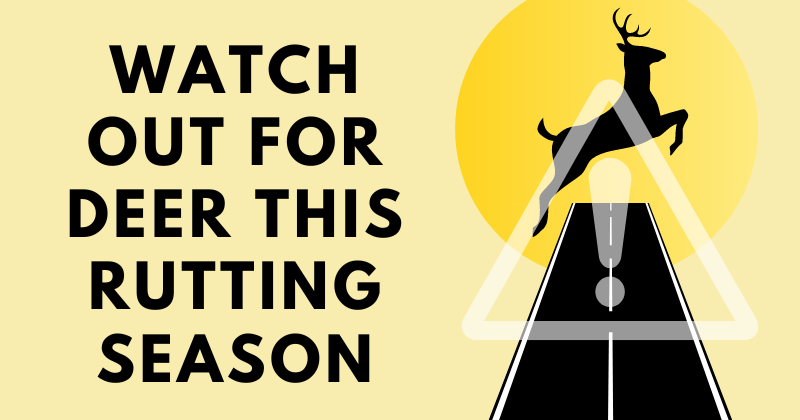
Take special care on forest roads during the rutting season
October is the most exciting time of year if you are a deer, because it’s in the midst of the rutting season – a time when they engage in fierce mating battles.
Rutting season
Rutting activity is most intense soon after dawn and before dusk, though some activity occurs throughout the day.
Epping Forest has a large deer population and sadly, the mortality rate for deer is still rising on the very busy forest roads.
Males, which are known as bucks, grow new antlers every year and around the time they lose them they claim a patch of ground as a rutting stand and advertise their presence with loud guttural bellows, attracting the female of the species known as Does. The Bucks fight off any rivals, often with tremendous battles of clashing antlers.
If you’re out and about in the forest during the rutting season it is wise to follow a few simple rules:
- If you have your dog with you, keep it on a lead and under close control.
- Keep your distance! Do not approach any deer closer than 50m and stay at least 100m from rutting deer.
- Pay special attention to any signage and follow its advice.
- If you find a deer advancing towards you or acting in a threatening manner, do not shout or wave at it. Back off slowly if possible; the deer may be satisfied that you have left its personal zone. Do not run, though, as this may trigger the animal into chasing you.
Deer population
Epping Forest’s deer population is made up of dark fallow deer – thought to have been introduced to the Forest from Scandinavia by King James I – and Muntjac, a small Asian deer introduced by the 11th Duke of Bedford to his Woburn estate at the turn of the century. Escapees successfully bred and can be found throughout the Epping Forest District.
A Deer Sanctuary to the south west of Theydon Bois, provides safe grazing for a herd of dark fallow deer. It is not open to the public. Deer numbers outside the sanctuary are monitored on an annual basis, and a number of ‘deer glades’ have been created within the forest to provide safe feeding areas.
Keep up to date
Keep in touch with our latest news, service updates and reports.
